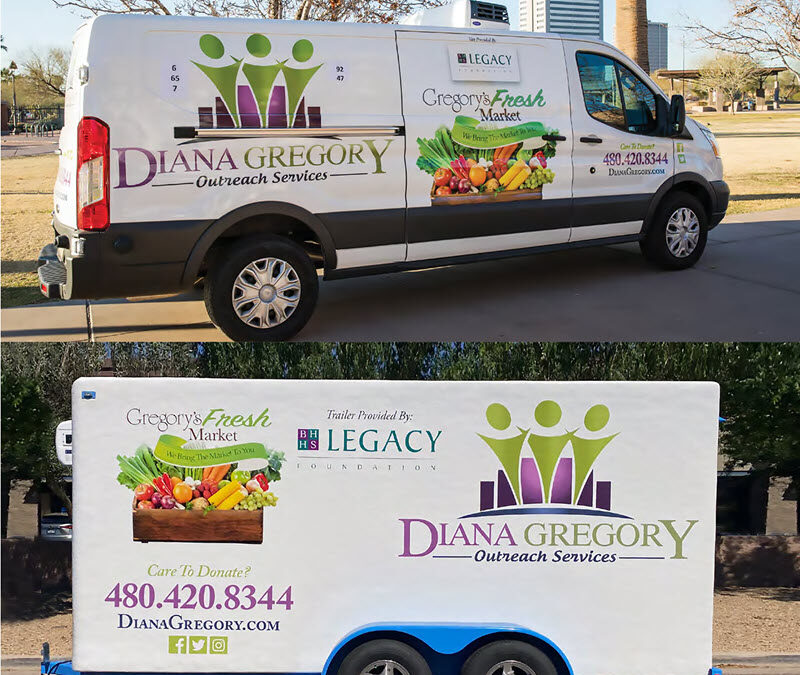
REFRIGERATED FOOD TRAILER BOOST FOOD DISTRIBUTION SERVICES TO SENIORS, VETS IN GREATER PHOENIX COMMUNITY
REFRIGERATED FOOD TRAILER BOOST FOOD DISTRIBUTION SERVICES TO SENIORS, VETS IN GREATER PHOENIX COMMUNITY
problem. According to government statistics, nearly $200 billion of food goes to waste each year in the
U.S. The problem is made even more frustrating when considering that more than 40 million people
today struggle with hunger and experience food insecurity.
To combat the problem of food waste while helping to eliminate food insecurity for seniors and
vets living in the Greater Phoenix area, Diana Gregory Outreach Services (DGOS) acquired a refrigerated
food trailer, donated by the BHHS Legacy Foundation, an organization committed to maintaining
healthcare services for children, seniors, and families in the Greater Phoenix and Tri-State region. The 6’
x 16’ trailer is manufactured by Polar King Mobile, a company with more than 40 years of experience
creating refrigerated trailer solutions.
“The coronavirus pandemic has aggravated the food insecurity crisis in this region to new levels of
concern,” said Diana Gregory, CEO of DGOS. “Transport refrigeration strengthens our efforts to fight
food insecurity by giving us the capability to store and deliver more food. We are grateful to the BHHS
Legacy Foundation for its donation which helps us expand and improve our services to more residents in
the community.”
The mission of Diana Gregory Outreach Services is to enrich lives through healthy eating by
providing access to fresh produce for low-income seniors, veterans, and vulnerable individuals in the
Greater Phoenix community who are experiencing health disparities. The impactful programs and
services are focused on holistic health, nutrition, and fitness through on-site farmers’ markets and
educational programs. Their stated purpose: “We have a responsibility to ensure no senior and their
families in our community go to bed hungry.”
# # #



